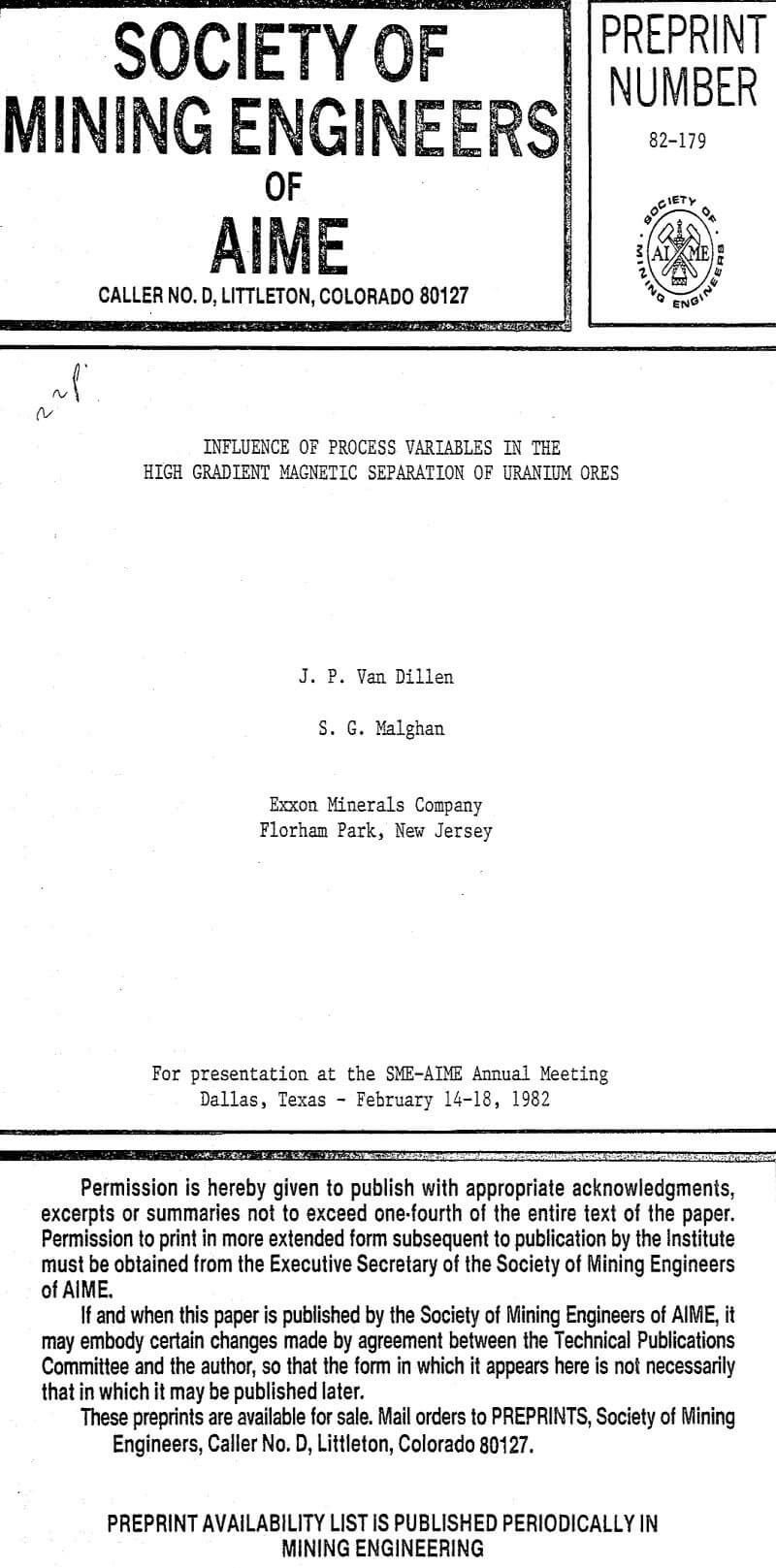Table of Contents
Continuing interest in processes that will effect separations in the fine particle size range has prompted intense interest in the use of high gradient magnetic separation (HGMS) for beneficiation of uranium ores. Some of the uranium minerals are paramagnetic and hence are amenable to concentration by HGMS.
HGMS is a powerful method in the upgrading of diamagnetic and paramagnetic minerals due to its ability to apply high gradients and high magnetic fields on the particles in the range of one micron to several hundred microns. The process has been studied for the beneficiation of a number of minerals, and other processes as diverse as the separation and purification of blood cells.
HGMS Technology
Major components of a HGMS device as shown in Figure 1 are an electromagnetic coil to generate the field, a canister to contain magnetic matrix, an entry for feed slurry, wash water and discharge chutes for the non-magnetic and magnetic fractions below the canister. The feed slurry can enter the separator either from the top or bottom, whereupon magnetic particles are held in the matrix, allowing non-magnetics to pass through to a discharge chute. When the trapped magnetic particles move out of the field zone, they are released and flushed out.

The mechanism by which the uranium minerals are attracted by a magnetic field is either due to their own magnetic susceptibility or due to their association with other minerals which themselves are magnetic. The data on magnetic susceptibility of uranium minerals is scarce. The only reported data is that for uraninite at 2360 x 10 -6 cm³/mole.
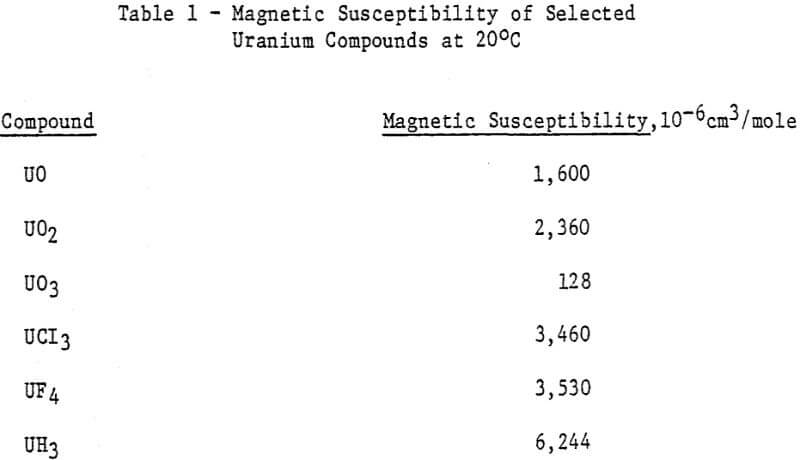

The response of uranium ores in the HGMS was studied by feeding well-dispersed slurry at 10% solids and examining the influence of process variables on selectivity and overall recovery of uranium.

Effect of Process Variables
Ore A was chosen for an assessment of the relative influence of field, feed particle size, matrix type, flow rate and matrix loading on uranium recovery. Uranium in this ore was fairly soluble in wash waters. Hence the use of the grade of magnetics as a response variable was not possible. The magnetics weight, expressed as the percentage of feed mass entraped by the matrix, was substituted for magnetics grade.

In the 18-30% +200 mesh range, however, there is no significant difference in uranium recovery between the 51 and 3/0 matrices. Only the field strength affects the uranium recovery over these sizes using these two matrices. The magnetics weight is, however, strongly influenced by both matrix type and feed size as well as field.
Flow rate, the velocity with which the pulp travels through the separator canister in the absence of magnetic matrix material, influences recoveries dramatically. Loading, defined here as the grams of feed per gram of matrix packing, also has been shown to affect the capacity and recoveries.
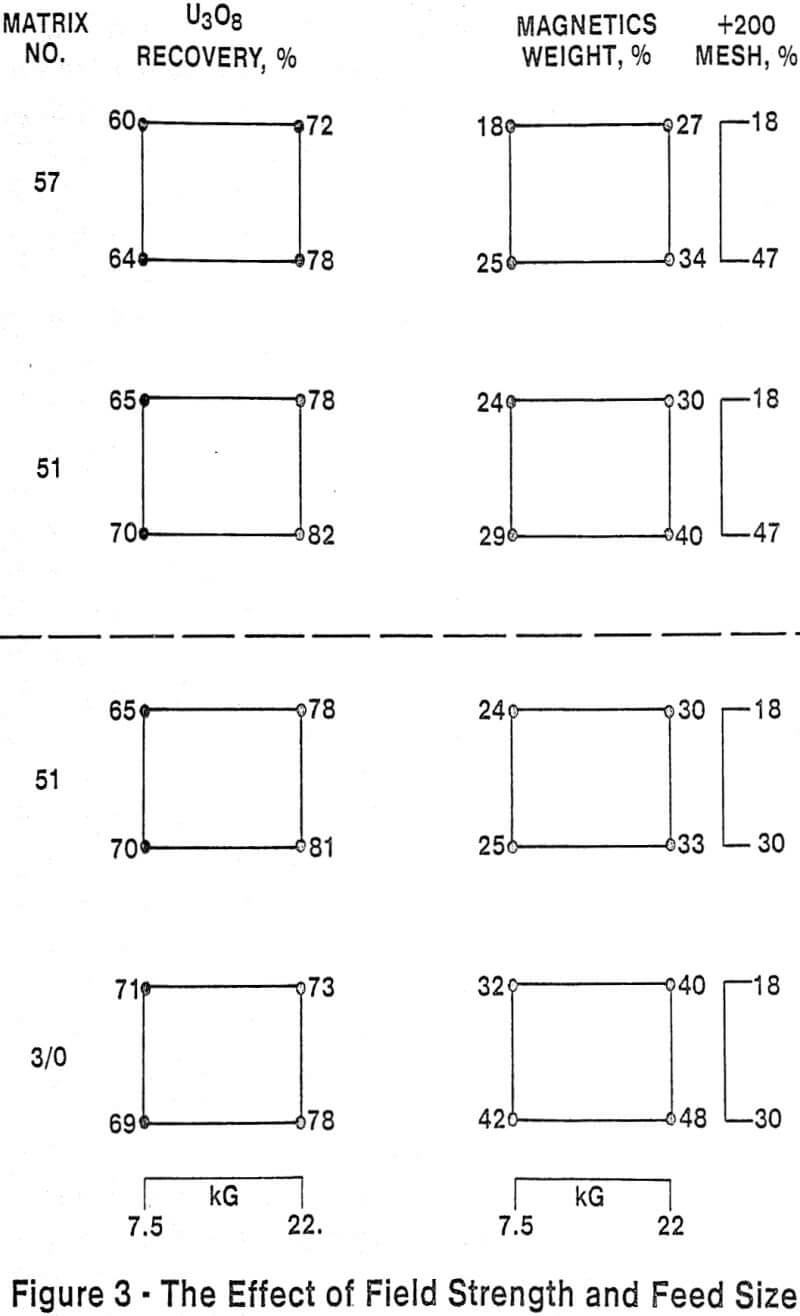
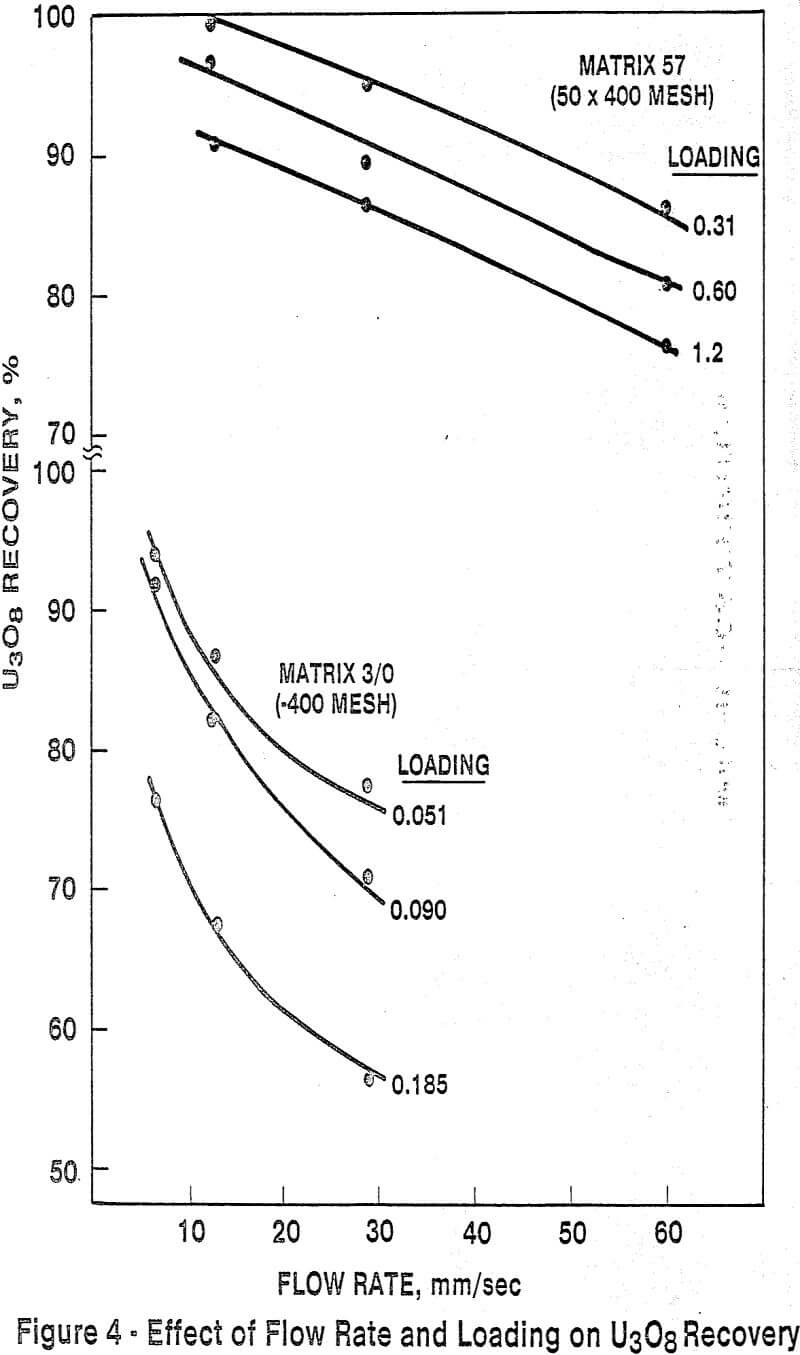

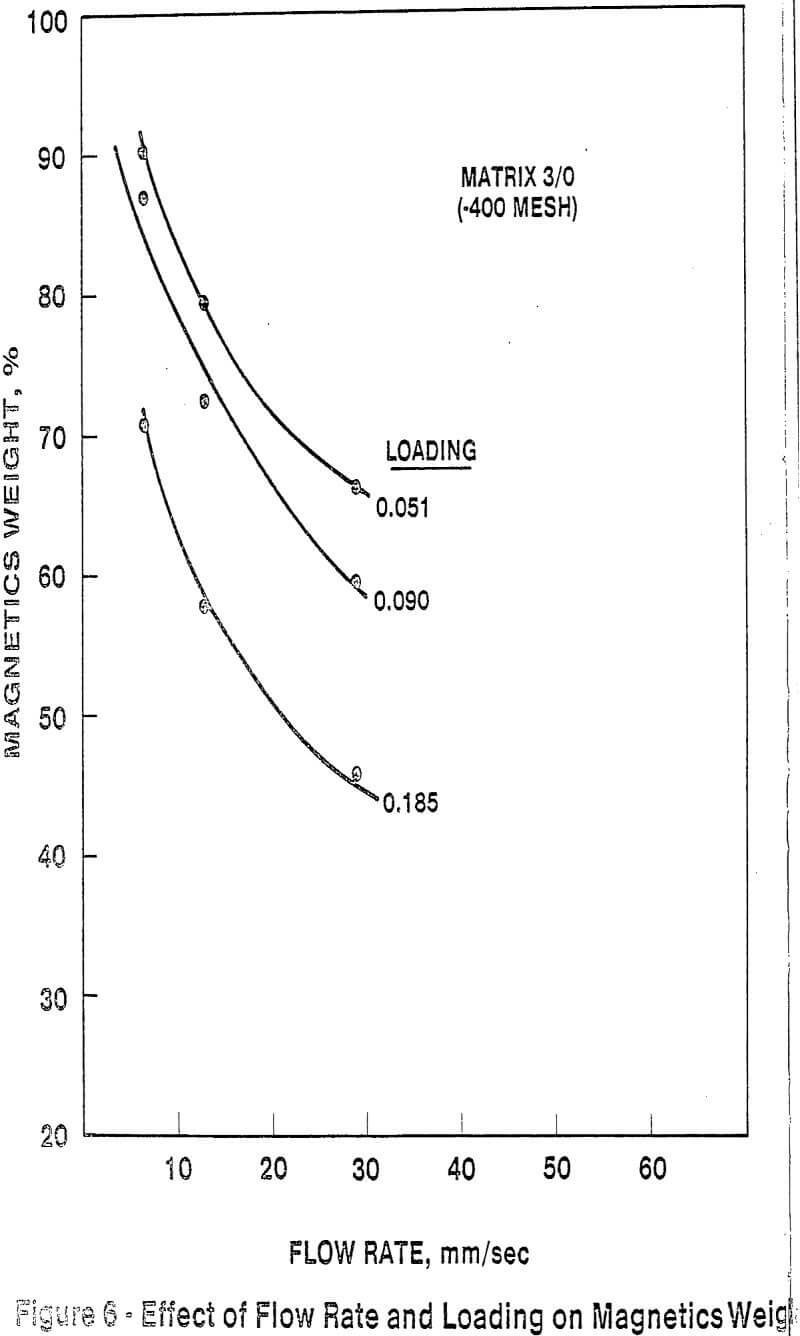
When additional tests on other uranium ores were completed, the differences inherent in the processing of sands versus slimes became more apparent. For example, to obtain the same uranium recovery from slimes as can be obtained from sands a larger magnetics weight must be tolerated.


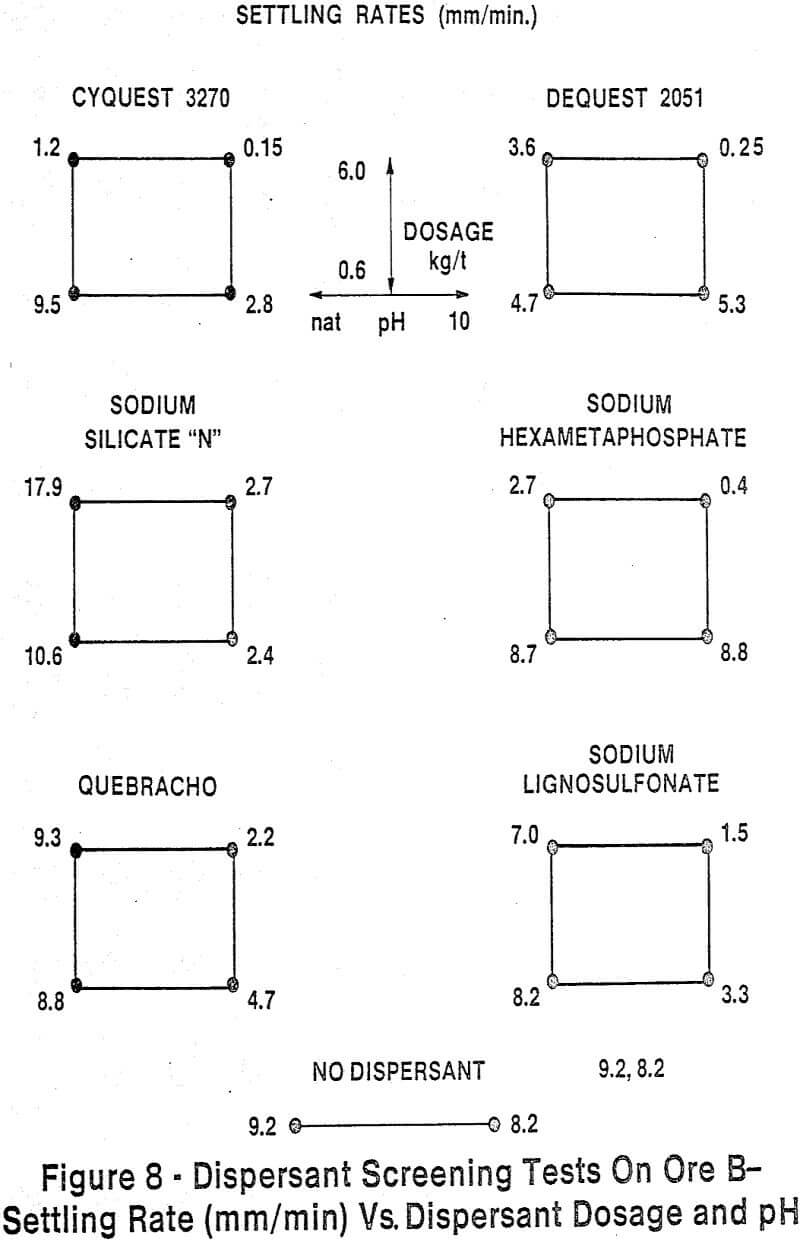

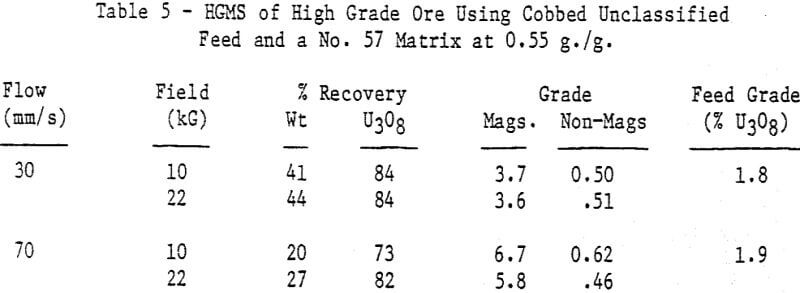
Although recoveries are fairly good, non-magnetics grades at 0.5% U3O8 are unacceptable. Thus two additional 23-factorial designed experiments were initiated to optimize the operating conditions for the cobbed feed classified at 200 mesh. At 22 kG, 50 mm/s and 0.60 g./g. the uranium recovery was 99.7%. Thus, in a single pass, 51% of the weight can be rejected at a grade of 0.02% U3O8.



